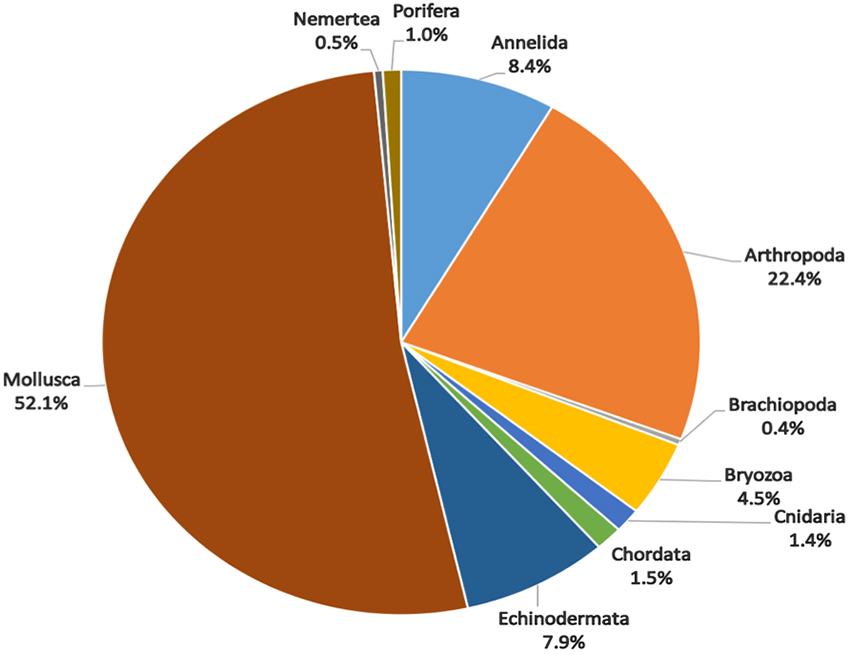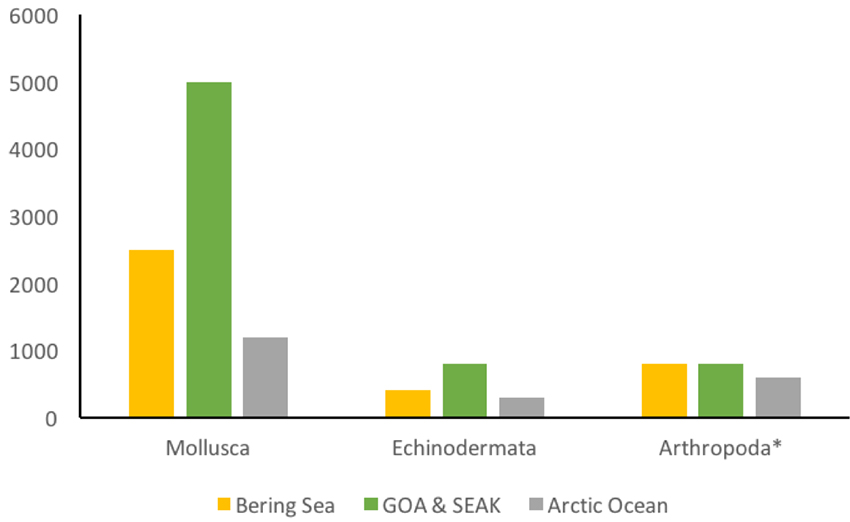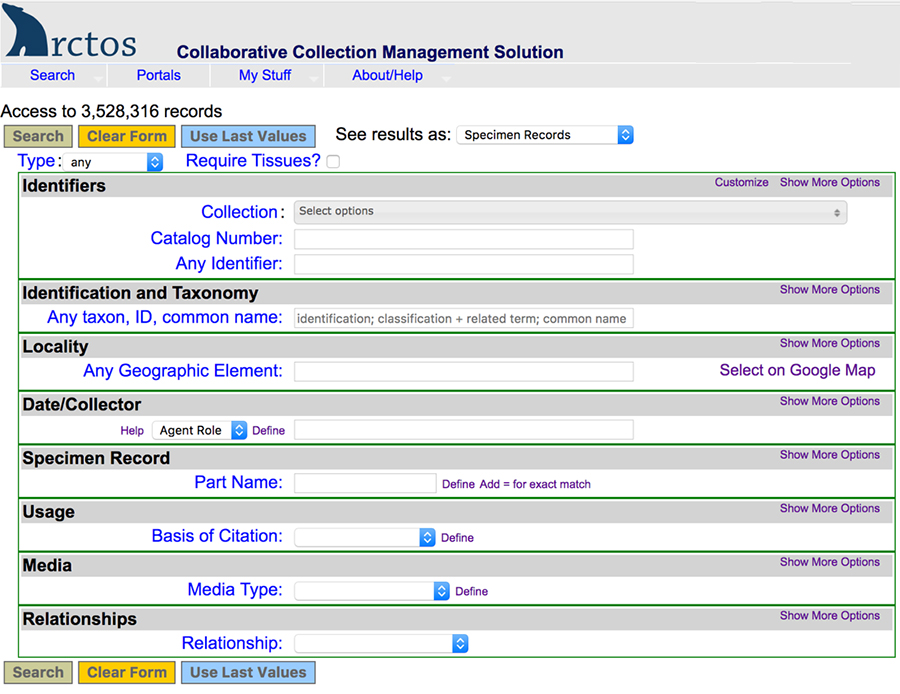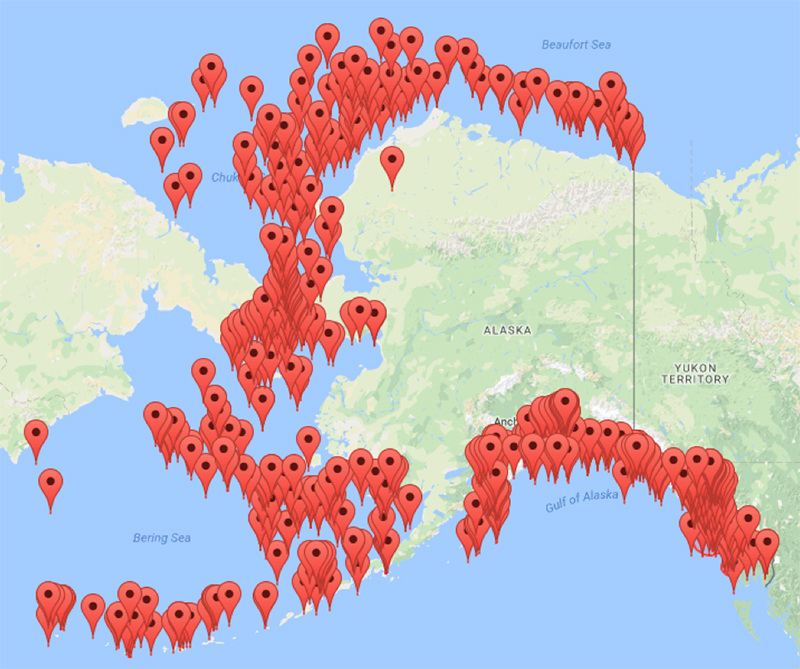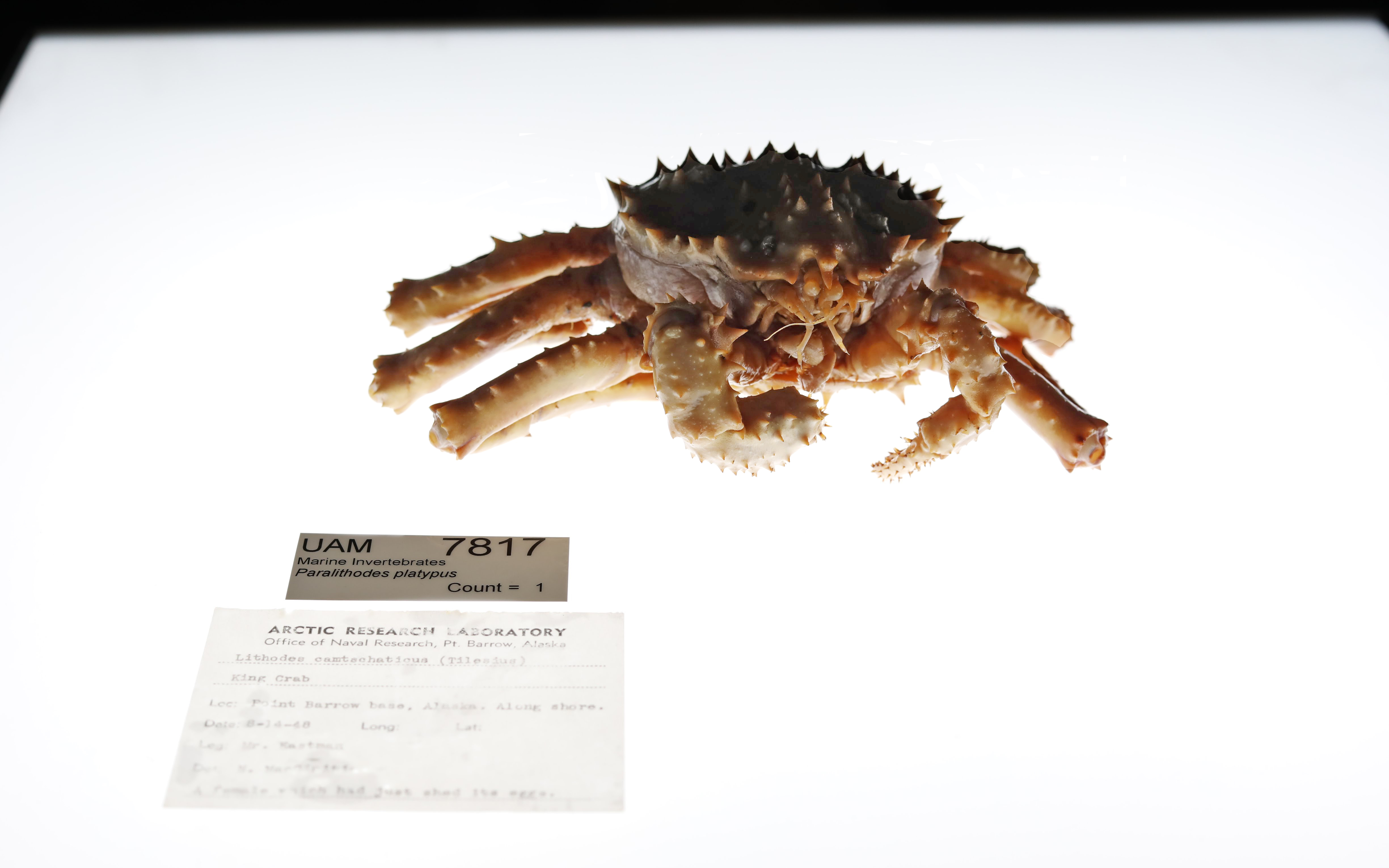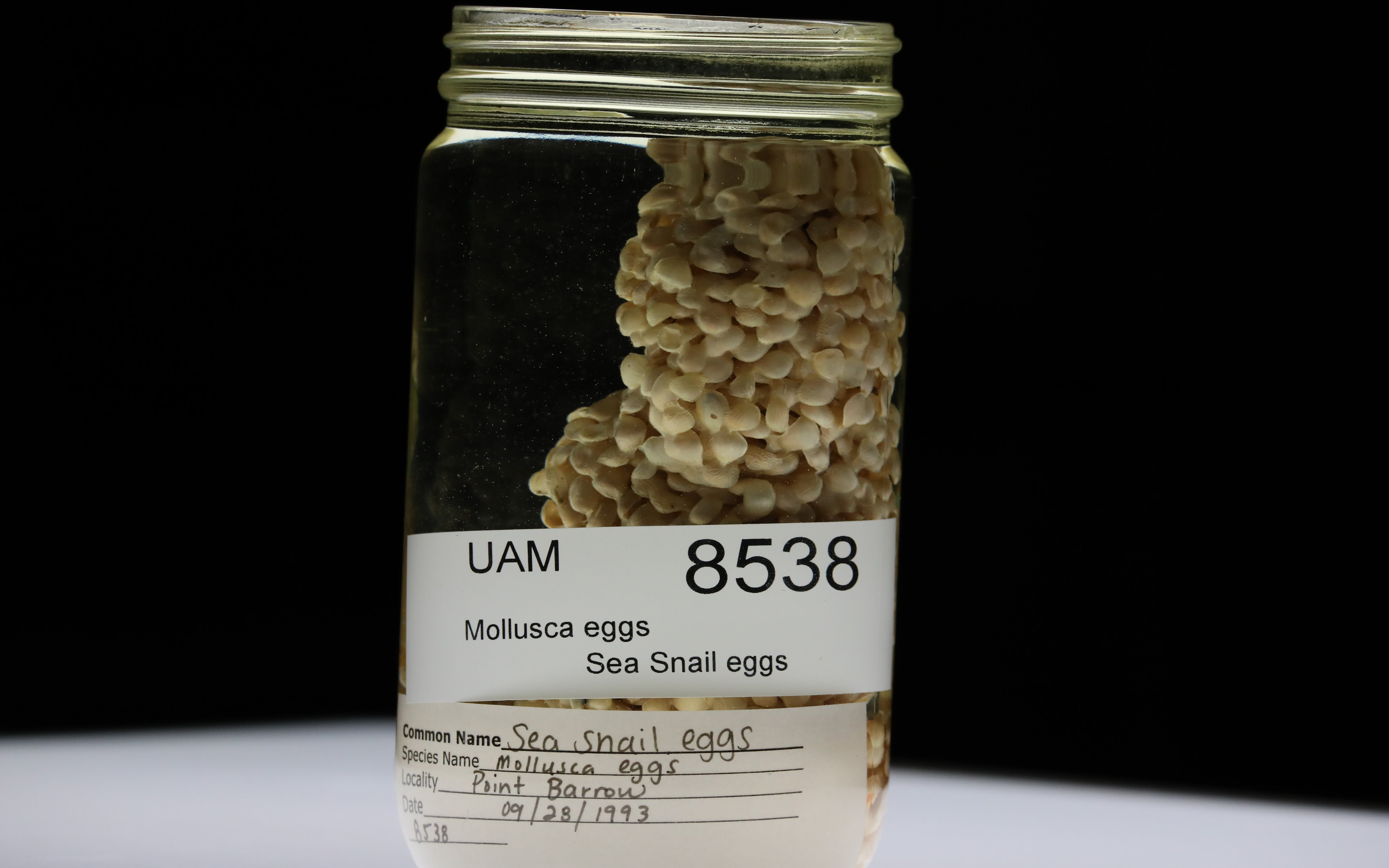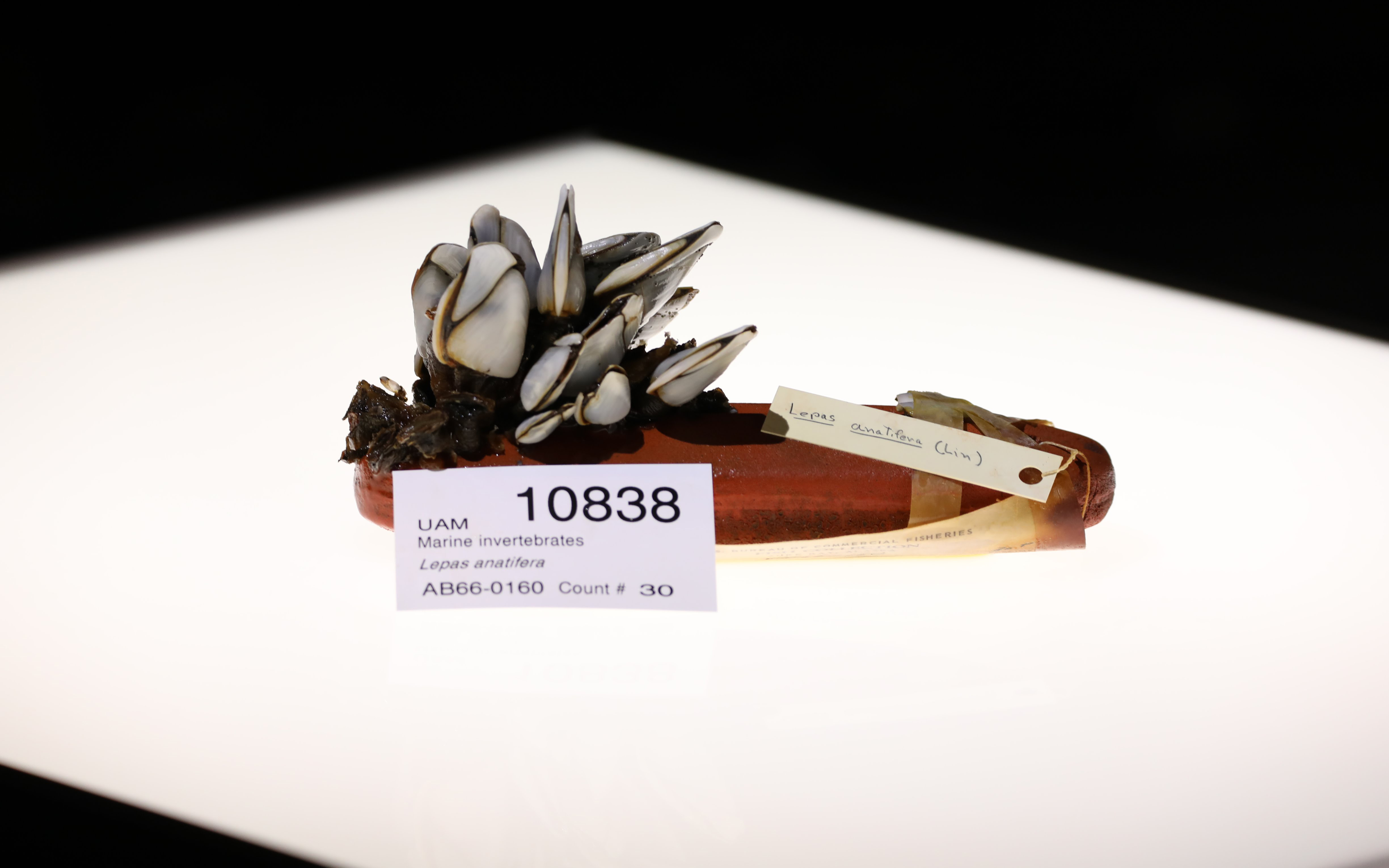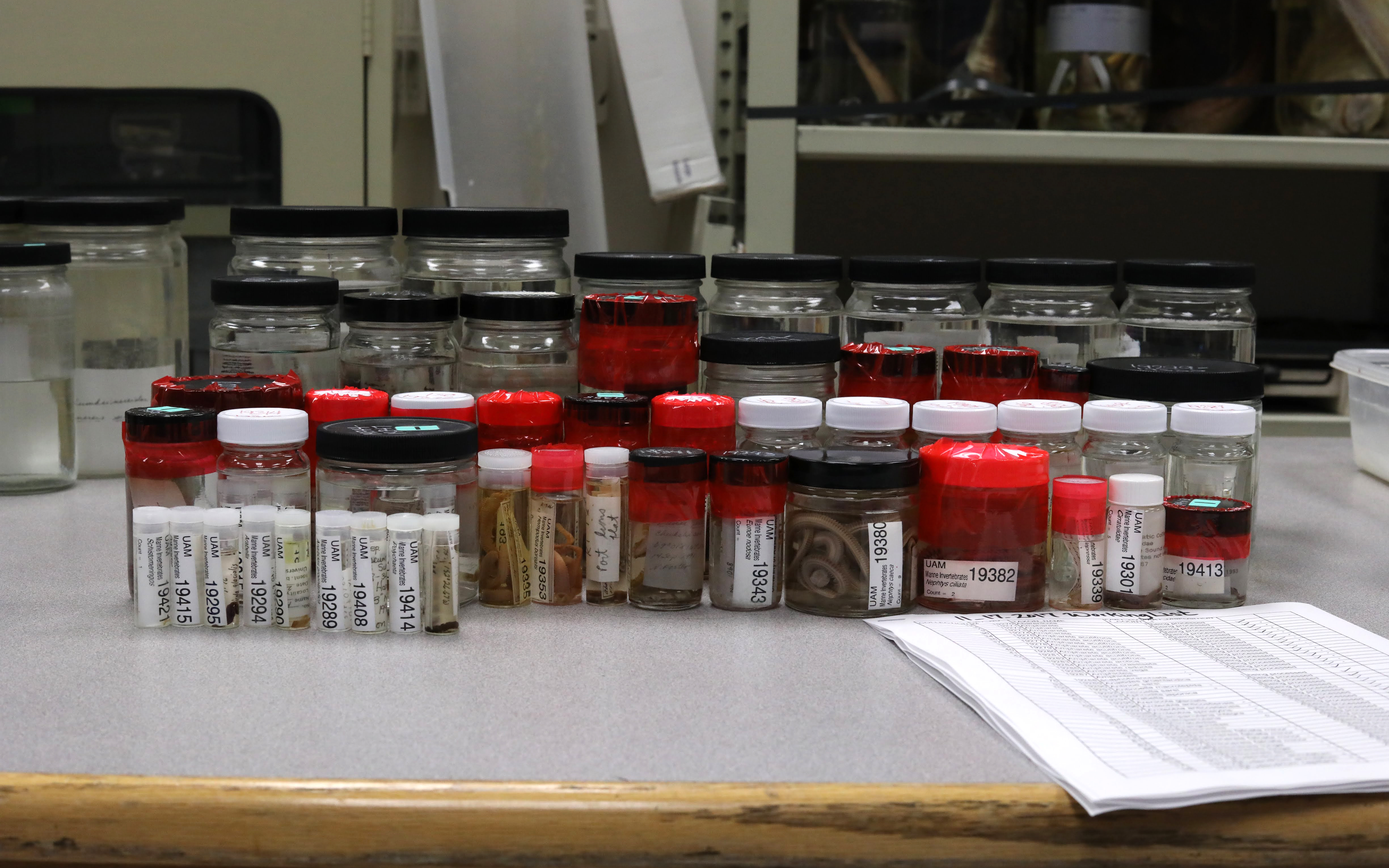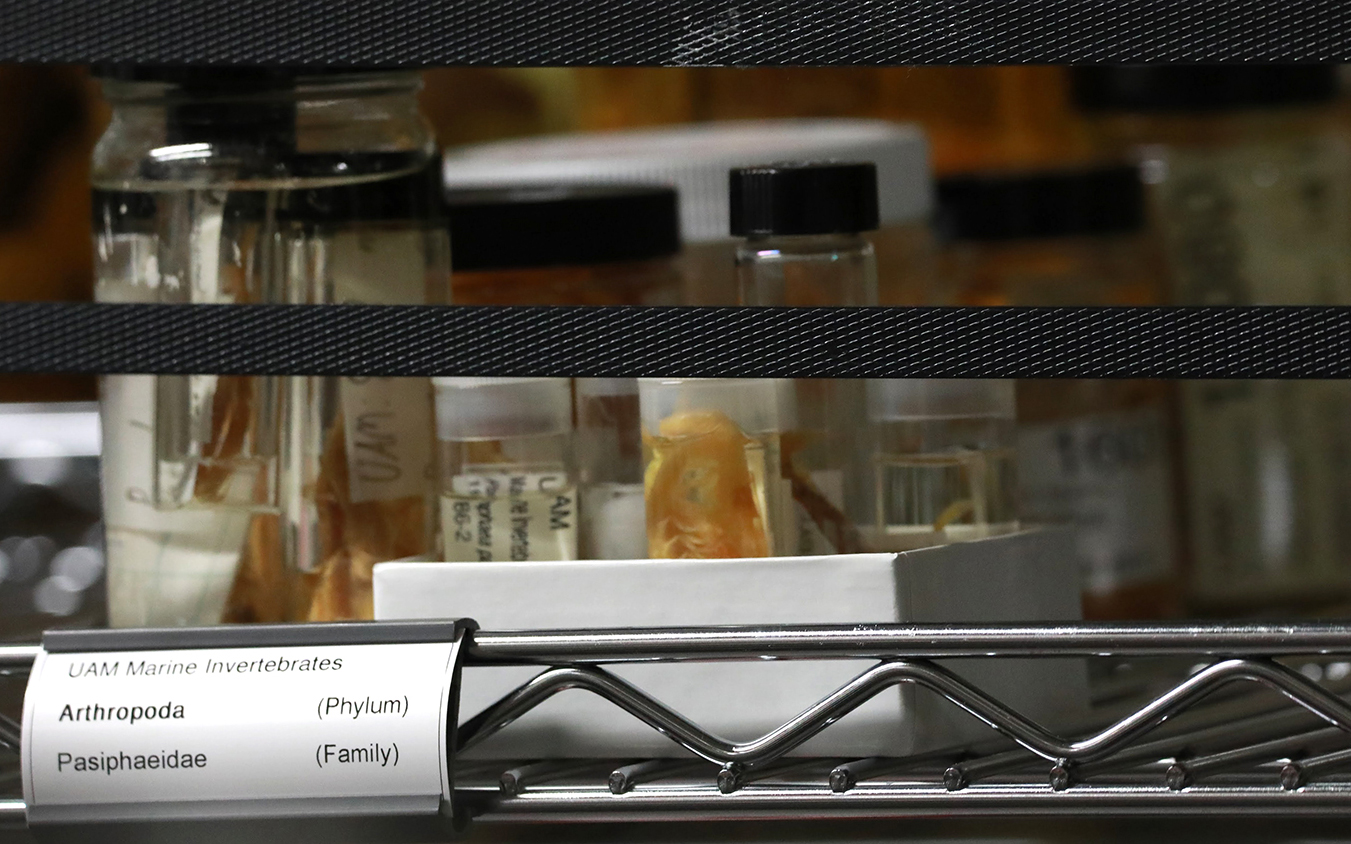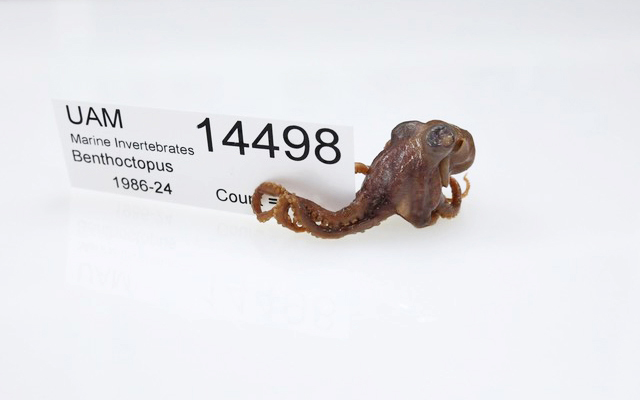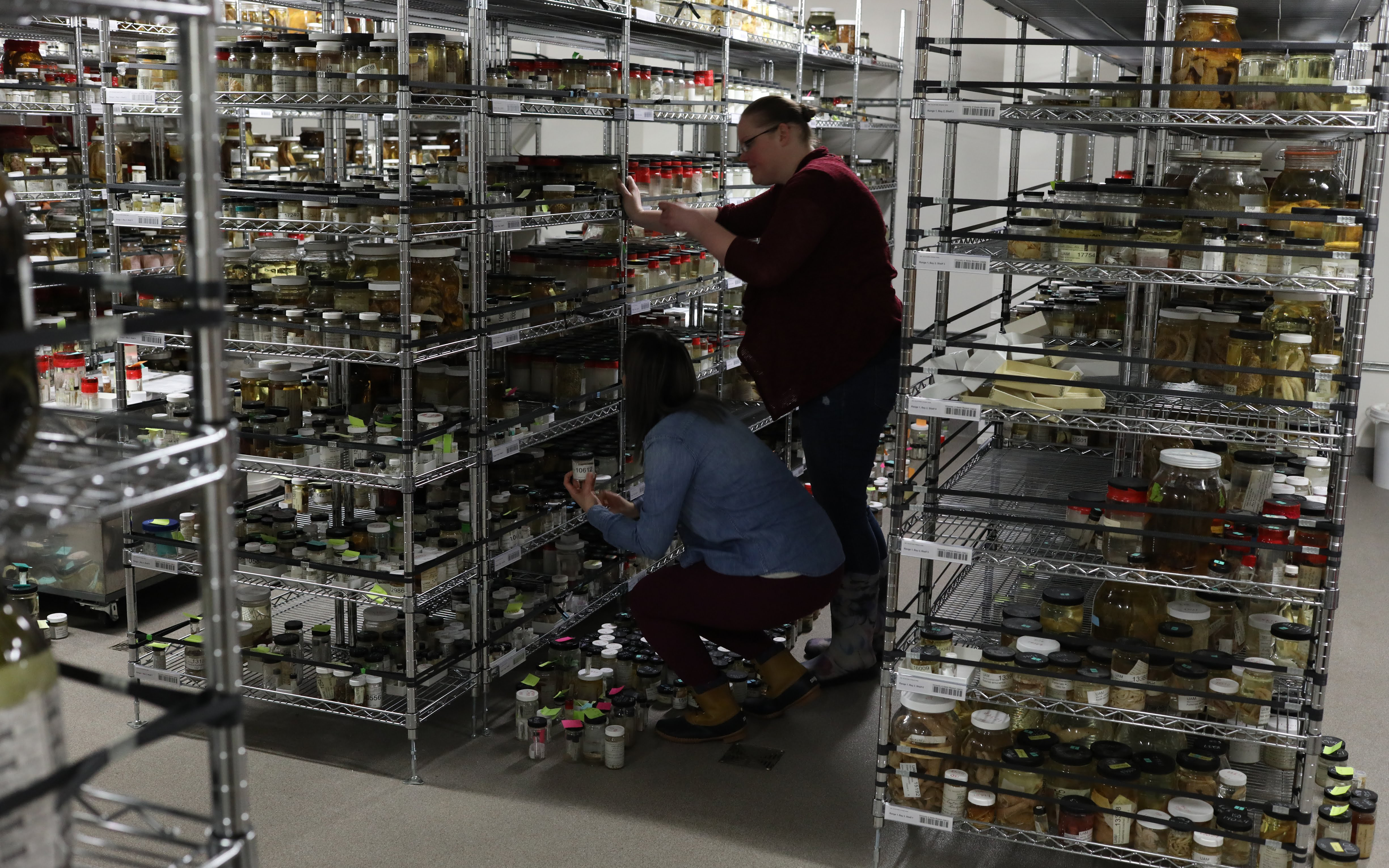Marine Invertebrate Collection
Quick links
- Marine invertebrate holdings
- Searching the database
- How collections are used
- How to deposit research specimens
- Photo gallery
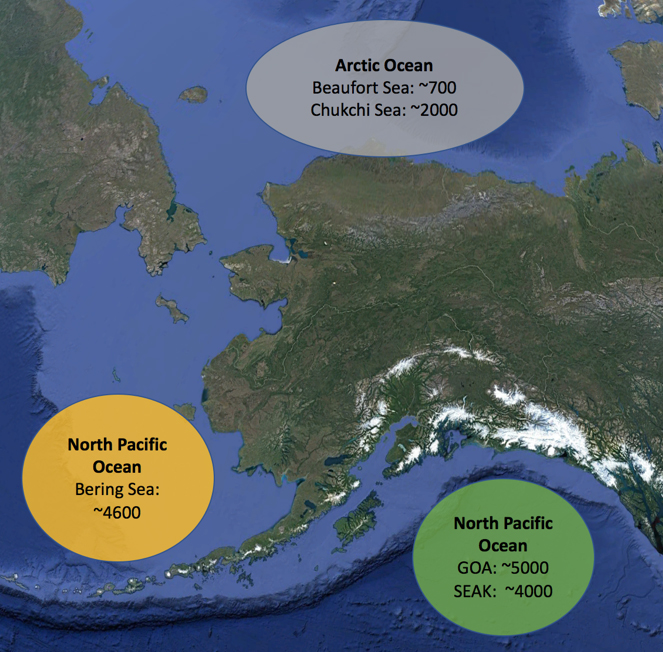
Approximate number of lots in the UAMN marine invertebrate collection from Southeast
Alaska (SEAK), the Gulf of Alaska (GOA), the Bering Sea, and the Arctic Ocean. Although
the bulk of our specimens are from the waters surrounding Alaska, there are also specimens
from other places around the world. Click image for larger version.
A joint project of the College of Fisheries and Ocean Sciences and the University of Alaska Museum of the North
The University of Alaska Museum of the North (UAMN) is home to thousands of marine invertebrate specimens collected from Alaskan waters over the past six decades. The museum has been building the collection since the 1960s, but without digital records linked to specimens, it was nearly impossible for researchers to access this valuable resource. By creating a database of records for the collection, a team of researchers from the College of Fisheries and Ocean Sciences and the museum have made this extensive marine invertebrate collection of some 30,000 specimens available for researchers around the world to explore and use.
Specimen records for all UAMN holdings are created, curated and maintained in Arctos, a web-based relational database that hosts specimen catalogs from more than 130 natural history collections. These specimens and their associated records are a valuable resource for evolutionary and ecological research focused on subarctic and arctic marine biodiversity. The collection is also a growing repository of voucher specimens and frozen tissue samples suitable for genetic analyses.
UAMN’s marine invertebrate holdings
Well-sampled regions include the Gulf of Alaska (~5000 records), Southeast Alaska (~4000 records), the Bering Sea (~4000 records) and the Arctic Ocean (~2500 records). Major taxa represented in our collection include mollusks (~9000 records), arthropods (~4000 records), echinoderms (~1500 records), and polychaetes (~1000 records).
Collections of interest include:
- Specimens collected off Point Barrow in the 1940s by George and Nettie MacGinitie
- Samples collected in Prince William Sound before and after the Exxon Valdez oil spill
- All the specimens that were previously part of the Auke Bay Laboratories research collections
- Specimens collected on countless research cruises over the decades
Searching the marine invertebrate database (and other UAM databases)
Specimen records for all UAMN holdings are created, curated and maintained in Arctos, a web-based relational database that hosts catalogs from more than 130 natural history collections. Arctos databases can be explored and obtained by the public using a feature-rich search interface with geography, taxonomy and time filters. Distribution maps of search results can be generated.
How are our collections used?
Natural history collections can be used for a variety of taxonomic and ecological studies that rely on well-preserved morphology. The records associated with our specimens provide a snapshot of where a particular species existed at a certain time in history and can be used to track changes in species ranges over time. Voucher specimen and tissue samples are available through research loans. Many preserved specimens are suitable for analyses of stable isotopes and certain inorganic contaminants.
How to deposit research specimens at the museum
If you have fieldwork coming up and are interested in depositing your specimens at UAMN, please follow these guidelines:
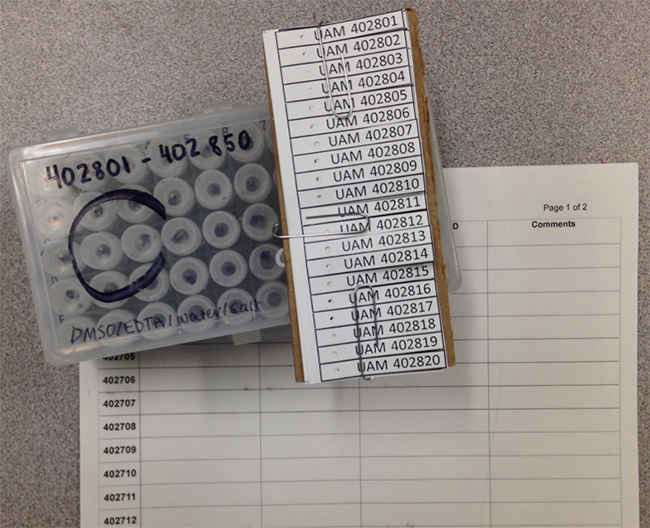
Planning stage
- Contact UAMN marine invertebrate collection staff to discuss collection needs and opportunities.
- Decide whether you will be collecting voucher specimen and/or tissue samples.
- Determine a preservation strategy and acquire preservation materials, including barcoded tissue vials, datasheets, and labels provided by UAMN.
During cruise
- Document key collection information at the time of specimen capture:
- Field numbers and other identifiers
- Station name/coordinates
- Collection date
- Collection method
- Collector names
- Identify all specimens to narrowest taxonomic level possible.
- Obtain tissue sample of vouchers—be sure to physically link and document corresponding barcode label to voucher specimen.

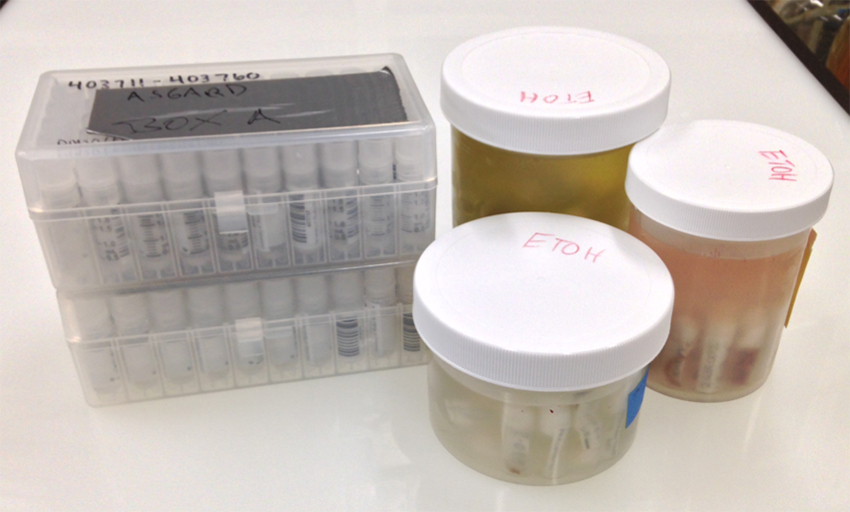
After cruise
- Send voucher specimen and tissue samples to UAMN;
- Collections technicians at UAMN create records for the specimens in the Arctos database;
- Once complete, UAMN will send you a link with directions on how to review records.



